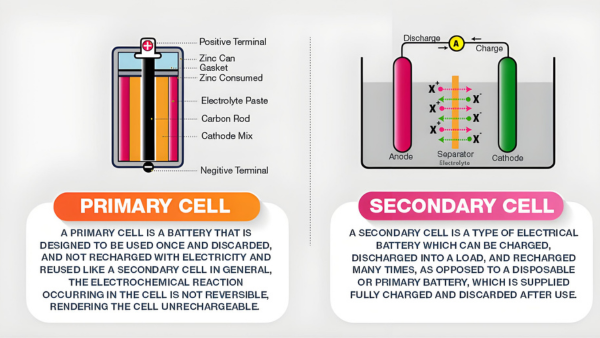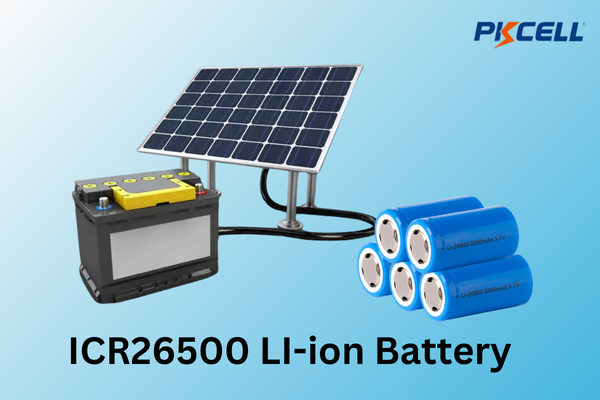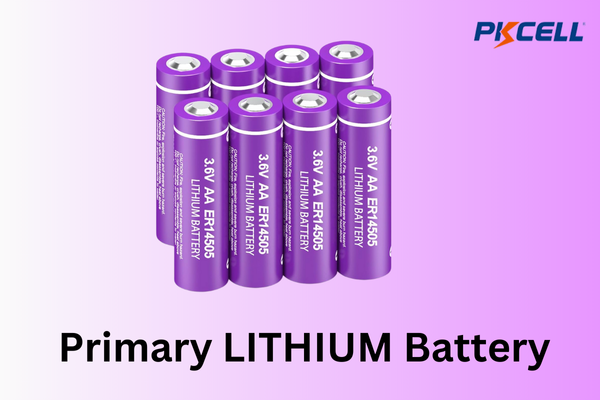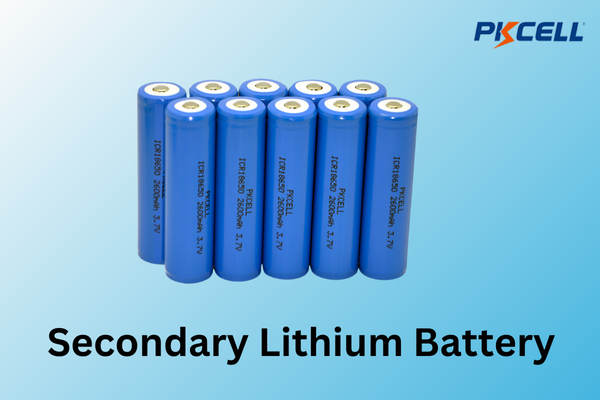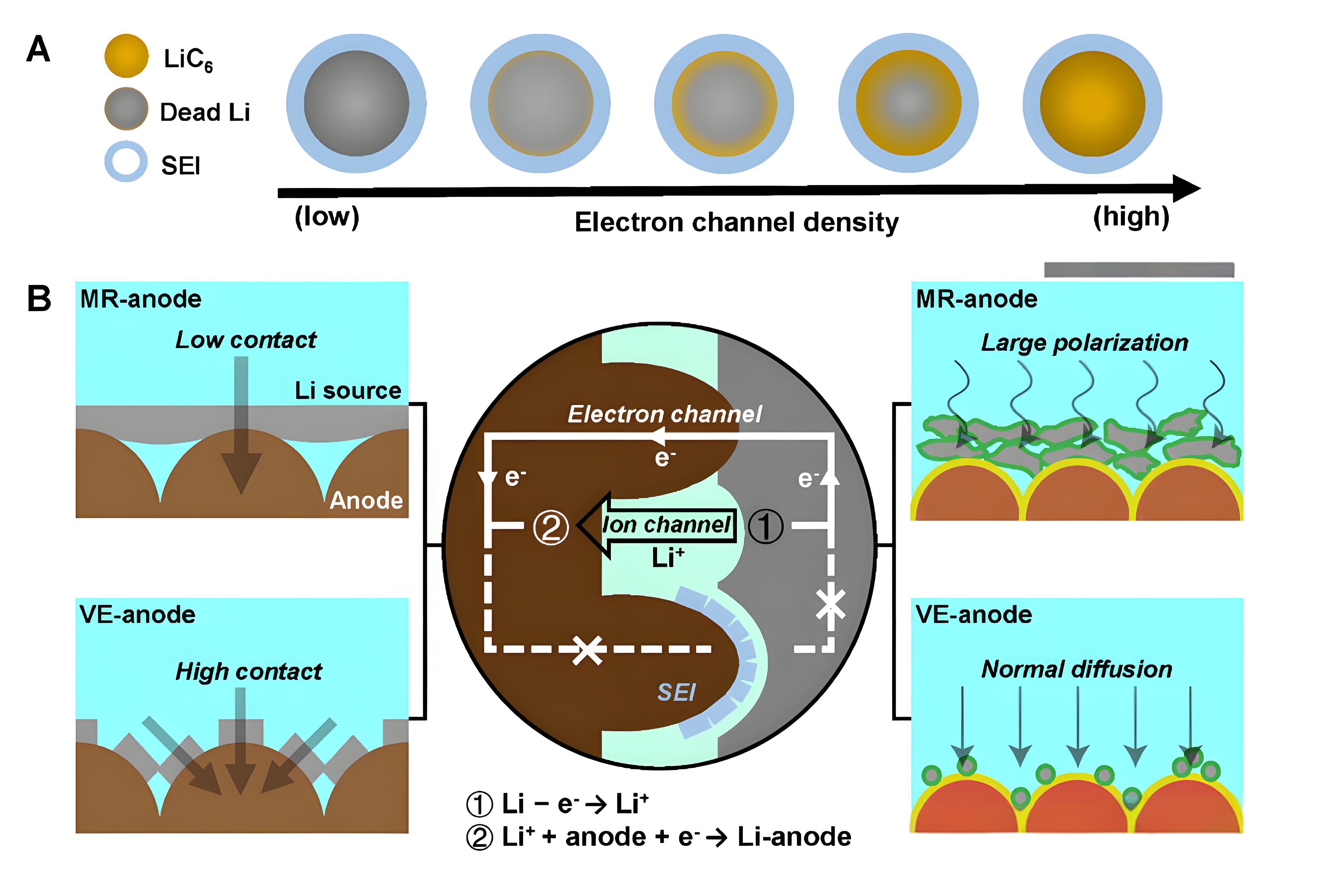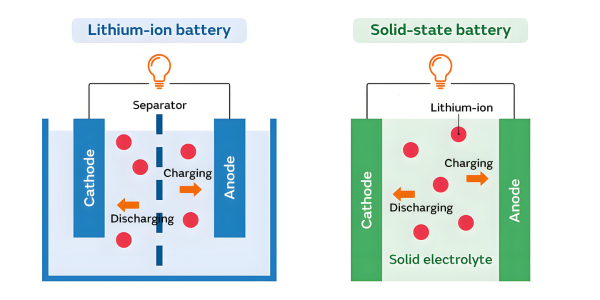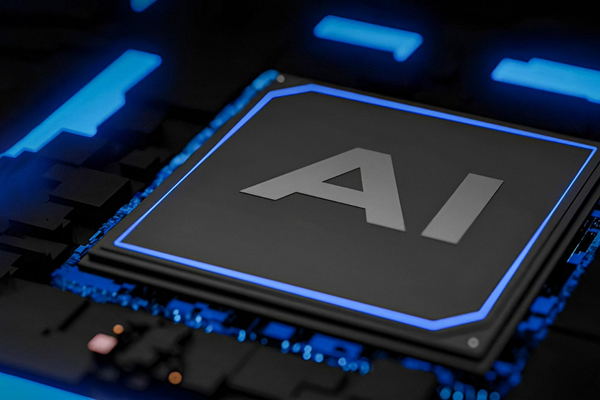Faits marquants
- Primary lithium batteries are meant for one-time use and cannot be recharged. They are usually found in medical devices, remote controls, and smoke detectors.
- Secondary lithium batteries, or rechargeable batteries, are standard in devices like laptops, smartphones, and electric vehicles (EVs).
- Primary batteries typically last longer on the shelf than secondary batteries, making them a good choice for items that are not used often.
- Even though secondary batteries can cost more at first, they save you money over time because you can use them again and again.
- When deciding which type to buy, consider the intended application, power needs, and the impact on the environment.
Introduction
In today’s world, we use more portable electronics than ever. So, learning about different kinds of batteries and how they function is crucial. This blog will focus on primary and secondary batteries. We will explain how both types work, their advantages and disadvantages, and where you can find them commonly used. This will help you make smarter choices when choosing the right batteries for your project.
What Are Primary and Secondary Lithium Batteries?
Batterie primaire au lithium
A non-rechargeable battery designed for single use. It generates power through a one-time chemical reaction that cannot be reversed. Once depleted, it’s discarded or recycled.
Example (Hot-Sell Model): ER14505 (Lithium Thionyl Chloride, LiSOCl₂) – a popular AA-sized primary battery with 3.6V and 2600 mAh capacity.
Secondary Lithium Battery
A rechargeable battery that can be charged and discharged multiple times. It uses reversible chemical reactions, typically lithium-ion technology, to store and release energy.
Example (Hot-Sell Model): ICR18650 (Lithium Cobalt Oxide, LiCoO₂) – a widely used 3.7V cylindrical cell, often with 2200–3500 mAh capacity.
Primary vs Secondary Lithium Battery
Here is a comparison table. This table highlights the key distinctions between Primary Lithium Batteries (e.g., ER14505) and Secondary Lithium Batteries (e.g., ICR18650). It compares rechargeability, voltage, energy density, cycle life, self-discharge, and cost.
|
Aspect |
Primary Lithium Battery (ER14505) |
Secondary Lithium Battery (ICR18650) |
|---|---|---|
|
Rechargeabilité |
Non-rechargeable, single-use |
Rechargeable, multi-use |
|
Tension |
Typically 3.0V–3.6V (e.g., 3.6V for ER14505) |
Typically 3.6V–3.7V (e.g., 3.7V for ICR18650) |
|
Densité énergétique |
Higher (~500–700 Wh/kg) |
Lower (~150–260 Wh/kg) |
|
Cycle de vie |
One-time use |
300–2000 cycles, depending on type |
|
Autodécharge |
Très faible (<1% par an) |
Higher (1.5–2% per month) |
|
Coût |
Higher upfront cost, no reuse |
Lower cost per use over time |
Pros and Cons of Primary Lithium Battery
Pros:
- Extremely long shelf life (10–20 years).
- High energy density for compact power.
- Excellent performance in extreme temperatures (-55°C to 85°C).
- Minimal self-discharge, ideal for long-term storage.
Cons:
- Non-rechargeable—must be replaced after use.
- Higher initial cost with no reuse value.
- Limited to low-drain applications.
Pros and Cons of Rechargeable Lithium Battery
Pros:
- Rechargeable, cost-effective over time.
- Versatile for high-drain and frequent-use devices.
- Wide range of capacities and chemistries (e.g., ICR, INR).
Cons:
- Shorter shelf life due to self-discharge.
- Requires a charger and battery management system (BMS).
- Degrades with cycles, needing eventual replacement.
Utilisations courantes
Primary Lithium Battery (ER14505):
- Applications: Utility meters (water/gas), remote sensors, smoke detectors, GPS trackers, medical implants (e.g., pacemakers), and military equipment.
- Why: Longevity and reliability in low-power, long-term scenarios.
Secondary Lithium Battery (ICR18650):
- Applications: Smartphones, laptops, electric vehicles, power tools, flashlights, drones, solar power banks.
- Why: Rechargeability suits frequent use and high-power needs.
Common Types of Primary Lithium Battery
Primary Lithium Batteries are non-rechargeable, offering high energy density and long shelf life. Common types include:
- Lithium Thionyl Chloride (LiSOCl₂): e.g., ER14505 – Ultra-long life, low drain.
- Lithium Manganese Dioxide (LiMnO₂): e.g., CR2032 – Compact, coin cells.
- Lithium Iron Disulfide (LiFeS₂): e.g., AA – High power, consumer use
Common Types of Rechargeable Lithium Battery
Rechargeable lithium batteries, or secondary lithium batteries, power modern devices with high energy and versatility. Popular types include Lithium Cobalt Oxide (ICR) for compact electronics, Lithium Nickel Manganese Cobalt (INR) for balanced EV performance, Lithium Nickel Cobalt Aluminum (NCA) for high-energy needs, Lithium Iron Phosphate (IFR) for safety and longevity, Lithium Manganese Oxide (IMR) for power tools, and Lithium Polymer (LIP) for flexible, lightweight designs.
When to Choose Primary Lithium Batteries (e.g., ER14505):
- Long-Term, Low-Power Needs: Devices like remote sensors or meters that run for years without maintenance.
- Harsh Environments: Extreme cold or heat where secondary batteries might fail.
- No Access to Charging: Remote locations or disposable devices (e.g., emergency beacons).
- Critical Reliability: Medical or safety devices where replacing a battery is better than risking recharge failure.
When to Choose Secondary Lithium Batteries (e.g., ICR18650):
- Frequent Use: Daily-use gadgets like phones or tools that need regular recharging.
- High Power Output: Applications like EVs or drones require strong, sustained energy.
- Cost Efficiency Over Time: When you can recharge hundreds of times instead of buying new batteries.
- Charging Available: Environments where power sources are accessible for recharging.
Technological Innovations in Lithium Batteries
The world of lithium battery technology is always changing. Researchers and engineers find new ways to improve it. Recent changes focus on making batteries last longer, work better, be safer, and cost less. This helps more people use lithium batteries in different areas.
Let’s explore some fun new ideas and trends shaping lithium batteries’ future.
Breakthroughs in Battery Longevity and Efficiency
In lithium battery research, a key goal is to make batteries last longer. This involves tackling capacity fade, which happens when a battery loses its ability to hold a charge over time. Researchers are experimenting with different materials, electrode designs, and electrolyte combinations to slow down this process. They aim to reduce capacity fade and increase the battery’s lifespan.
Here are recent breakthroughs in the battery industry:
Lithium Replenishment
- What: Adding lithium salts or compounds to restore lost ions in ageing batteries.
- Breakthrough: Fudan University (China) developed a “battery transfusion” method, achieving up to 12,000 cycles—equivalent to 18 years of EV use.
- Impact: Triples typical lifespan (e.g., from 1,000 to 12,000 cycles), cutting replacement costs and waste.
Solid-State Electrolytes
- What: Replacing liquid electrolytes with solid materials like ceramics or sulfides.
- Breakthrough: Quantumscape and Toyota report energy densities up to 50% higher (350–500 Wh/kg) and 80% charge in 15 minutes.
- Impact: Enhances efficiency with faster charging and doubles longevity by reducing degradation from liquid-based side reactions.
Silicon Anode Optimization
- What: Using silicon instead of graphite, with nanostructuring to prevent cracking.
- Breakthrough: Sila Nano’s silicon anode batteries deliver 20–40% more capacity (e.g., 300 Wh/kg) and maintain 80% capacity after 1,000 cycles.
- Impact: Boosts energy efficiency for longer ranges and improves lifespan over traditional graphite anodes.
AI-Optimized Battery Management
- What: AI algorithms fine-tune charging patterns and monitor degradation in real-time.
- Breakthrough: Tesla and IBM integrate AI to predict failure and optimize cycles, extending life by 20–30% (e.g., 1,200 cycles vs. 1,000).
- Impact: Maximizes efficiency and longevity without altering battery chemistry.
Lithium Iron Phosphate (LFP) Enhancements
- What: Adding lithium or improving cathode structure in LFP batteries.
- Breakthrough: CATL’s upgraded LFP cells eliminate initial capacity loss, achieving 3,000–4,000 cycles at 160 Wh/kg.
- Impact: Combines longevity with cost efficiency, ideal for grid storage and affordable EVs.
Conclusion
In conclusion, it’s key to understand the difference between primary and secondary lithium batteries when picking the right power source for your needs. Primary batteries last a long time on the shelf. You can use them immediately. Secondary batteries, on the other hand, can be recharged. They are more cost-effective over a longer period. Consider your specific needs, like energy capacity and cycle life, to make a smart choice. Technology is constantly improving battery performance, which helps with longevity and efficiency. Stay updated on new trends to find the best batteries for your devices. For tailored advice on which lithium battery to choose, you can contact our experts in the industry for quotes.
Questions fréquemment posées
Which is better, primary or secondary battery?
The choice between primary batteries and secondary batteries depends on your needs. If you want a battery for single use, has high energy, and lasts a long time on the shelf, then primary batteries are best. However, if you like batteries that you can recharge and that help you save money, secondary batteries are a better option for you.
Which is better, an NMC or LFP lithium battery?
NMC batteries generally have a higher energy density. This makes them good for situations where storing a lot of energy is important. LFP batteries, on the other hand, last longer and are safer. However, they do usually cost a little more.
What is the main advantage of secondary batteries over primary batteries?
The biggest advantage of secondary batteries is that you can charge them again. This key feature lets you use them longer, saves you money in the long run, and helps the environment by reducing battery waste.
Are lithium batteries the same as lithium-ion batteries?
Lithium batteries have two main types: primary and secondary. Primary batteries can’t be recharged and usually contain lithium-manganese dioxide. They are ideal for devices that don’t use much power. In contrast, secondary batteries can be recharged and mainly use lithium-ion technology. They are perfect for devices that need a lot of power.
What are the pros and cons of lithium batteries?
Lithium batteries offer several advantages. They are lightweight and have a high energy density. They also have a slow discharge rate. However, they can be quite costly. It is crucial to handle and dispose of them with care. This is important due to safety concerns like overheating or fires.

